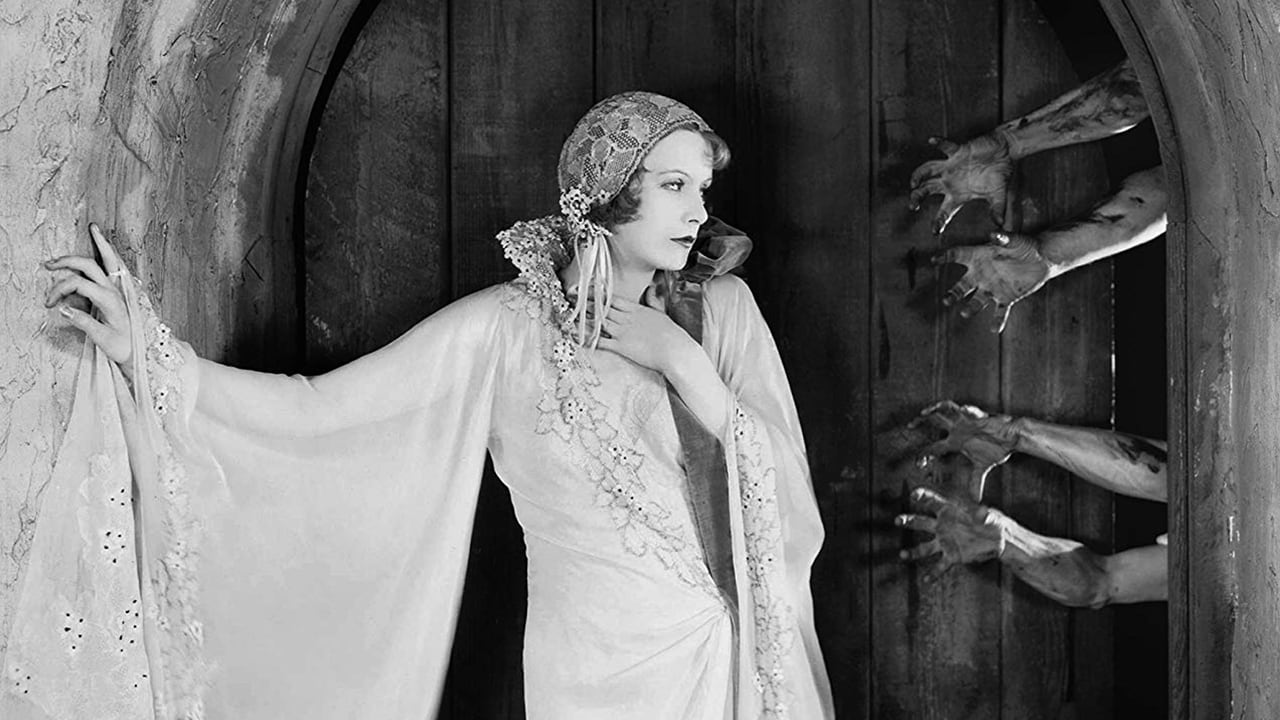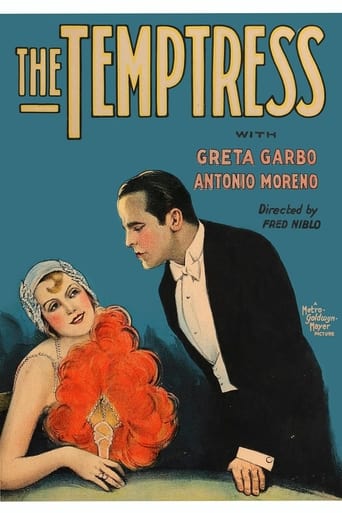



A Brilliant Conflict
Watch something else. There are very few redeeming qualities to this film.
View MoreThe story, direction, characters, and writing/dialogue is akin to taking a tranquilizer shot to the neck, but everything else was so well done.
View MoreIt is interesting even when nothing much happens, which is for most of its 3-hour running time. Read full review
View MoreFor Greta Garbo's second film under her new MGM contract the studio went back to the same source that they got for her first film with them Torrent. Vicente Blasco Ibanez offered up another of his novels for Garbo, The Temptress. Greta's got a whole lot of the men panting after her in this one.Blasco Ibanez also gave us the slightly more familiar Four Horsemen Of The Apocalypse and Blood And Sand which served Rudolph Valentino well during the silent era. Garbo's character of Elena has a lot of similarity with Dona Sol in Blood And Sand. It ends a lot worse for Elena than for Dona Sol.Garbo is married to Armand Kaliz who is not above peddling his wife's charms to get ahead. Right now she's got the wealthiest banker in Paris Marc McDermott in tow, but he means nothing to here but a cash cow for the husband. Who she really likes after meeting him at a costume party is Antonio Moreno, an engineer from Argentina who is looking for investors in a dam he wants to build.After McDermott commits suicide when he's facing ruin and names Garbo as the one responsible, to escape until the notoriety dies down Garbo and Kaliz go to the Argentine Pampas and visit with Moreno. The local bully and bandit leader Roy D'Arcy takes one look at her and likes her and knows she's available in the right conditions. That sets up all the action for the remainder of the film.Garbo's performance in The Temptress certainly assured her of a long career which was only briefly interrupted by the coming of sound where MGM took superb care to see that their investment transitioned smoothly. She is seductive and alluring in The Temptress like she was never before or since, even in her torrid film with John Gilbert Flesh And The Devil or in Mata Hari which calls for seductive and alluring like it calls for breathing.Moreno was one of the first players to be known as Latin Lovers and he was about ending his career in those roles and would be transitioning to character parts. Roy D'Arcy as the bandit chief registers the best after Garbo. He had that Snidely Whiplash thing down pat and the silent screen certainly called for those overacted gestures. His career would continue in sound, but not as successfully. His duel with the whips with Moreno is as savage an encounter between hero and villain as you'll ever see on film.The Temptress after over 80 years holds up well. For Garbo fans everywhere.
View MoreNot for or against Garbo but I have no interest to view every minute of one of her films.For the most part I will fast forward her movies only stopping if something of interest catches my attention.While skimming over this film I had to stop and view the entrance of Manos Duras(hard hands)played by Roy D'Arcy.It's really something the way silent films went the extra mile to give visual entertainment.The garb of D'Arcy instantly makes him a villain standout as he swaggers on to the screen.His appearance is somewhere in between Zorro overdressed or Zorro on crack.Along with having a gang he's a one man gang himself ready to use most anything that will cause injury.He and his guitar players are not to be missed.As for Garbo....she says her body is only wanted.That's as accurate as it gets.
View MoreI've always thought, when you see scenes of masquerade balls, how silly it is that those little carnival masks that only cover the space round the eyes are implied to genuinely disguise the wearer, and that whole plot turns have even been based on the premise. Of course, it's a different case when the scene is in The Temptress and the wearer is Greta Garbo.The Temptress, Garbo's first top-billed Hollywood role, opens at a masquerade. A big deal is made of the moment in which she unmasks before Antonio Moreno. Now, anyone who knows Garbo will have recognised her already, but it is only when that small piece of felt is removed that we are stunned by the full force of her astonishing beauty. This tiny instant alone guaranteed her stardom.But Garbo was not just a pretty face. Far from it; she was also one of the finest actresses of her generation, and one of the first truly great naturalistic performers of the silent era. For someone who was famed for her introverted and solitary nature offscreen, Garbo certainly knows how to kiss with authentic-looking passion. Throughout, it is not simply her looks which captivate us, it is her commanding screen presence. Her role in The Temptress is a perfect demonstration of her abilities, simply because she is a fairly passive player in most scenes, often in the background while others talk (or fight) over her. And yet, with this limited scope she conveys so much realism and intensity.The Temptress was directed by Fred Niblo, a veteran filmmaker who was even older than DW Griffith. Despite his age, Niblo's work never looked old-fashioned, and The Temptress displays his competent handling of the more fluid style of the late-silent period. He has a great sense of atmosphere and rhythm, and gives each segment of the picture a consistent feel. The opening scenes in Paris are surreal and dreamlike, with lots of slow dissolves (in those days an effect done in-camera, so definitely the work of Niblo and not the post-production team) and soft-focus. By carefully controlling background movement, he makes the shots by turns nightmarish and heavenly. The later scenes in the Argentine are characterised by stark realism, with a good standard of naturalism from the extras, and lots of neat little shots that add nothing to the plot but plenty to the tone, such as the dog snatching a corncob out of a boy's hands.Among Niblo's real feats of genius are the ways he introduces characters. Garbo gets no less than three startling entrances. First, in the aforementioned unmasking scene, Garbo removes her mask in an over-the-shoulder shot, so we see Moreno's reaction before we get to see her face for ourselves. Later, when Moreno finds out she is actually his friend's wife, she appears in the distance, so we can't be certain it's her. Then, as realisation dawns, she is suddenly right before us in close-up. And later still, when she arrives in Argentina, our first glimpse is of her feet descending from the carriage – again a tentative, teasing entrance – before slowly panning up to reveal her face. Another character treated to a neat introduction is the bandit Manos Duras, played by Roy D'Arcy, who appears first as a shadow on the door.This mention of Roy D'Arcy brings me onto my next point – it's not all about the Garbo (or the Niblo). There are some pretty impressive performances all round. D'Arcy himself is one of the few slightly hammy actors in The Temptress, but this is acceptable because we can believe that a character like Manos Duras would deliberately project this exaggerated persona. He gives the very unsettling impression of a man who tends to win, not because he is particularly powerful but because he has no fear, and is very much aware that he inspires fear in others. Antonio Moreno is one of many mediocre lead men of the silent era who went on to become an unheralded supporting player in the sound era. This is among the best of his lead performances, although for a great example of his later work check him out as the old Mexican in The Searchers. Honourable mentions also go to Robert Anderson, who plays Pirovani with great warmth, and Lionel Barrymore, who for once plays it with some subtlety.The only real trouble with The Temptress is its story, being a misogynist melodrama based on a Vincente Blasco Ibanez novel. Ibanez seems to have been a popular plot source in the 1920s, especially at Metro (he was also the original author of Four Horsemen of the Apocalypse, Blood and Sand, Mare Nostrum and Torrent), but his appeal is somewhat hard to fathom these days. And from here on, Garbo ended up getting typecast as the self-centred gold-digger, over whom men shoot themselves and each other. At the very least though, Garbo's beauty and allure makes her appearance as that kind of woman plausible. And while the chauvinism of the times presented such stories as retellings of the original sin myth, with the beautiful woman ruining the world, Garbo is able to give dignity to the character and paint her as a deeply tragic figure. With Garbo, this temptress is a victim not a villain.
View MoreFor some reason, Cedric Gibbons art direction succeeds in the scenes that take place in Paris but notably fail when he has to deal with Argentina. The opening and closing scenes are so impressive that it is really a shame that MGM was so careless about how this film should look.Written Vicente Blasco Ibáñez knew Argentina quite well and if most of the exteriors that take place there look like interiors. The villain as portrayed by Roy D'Arcy is ridiculous: he is ready to go to a carnival parade and does not remotely look menacing as probably Blasco Ibáñez described him on his book.Even with those flaws, it is interesting to compare the story with the tangos that were composed in Argentina at the time.Garbo's character is tragic figure and the men who would either die or kill for her are quite as pathetic as many people described in tangos.With all of its flaws, this film is worth watching and perfectly reflect many clichés that were frequent in the Argentina of that time. The music score specially composed for TCM by Michael Picton was very good, although the results would have been much better adopting contemporary Argentinean folkloric music.The alternate ending featured in DVD (obviously produced for Argentina unlike what Mark A. Vieira states on the audio commentary, since this films was probably one of the firsts that MGM distributed there) is more satisfying than the melodramatic finale of the original version.
View More